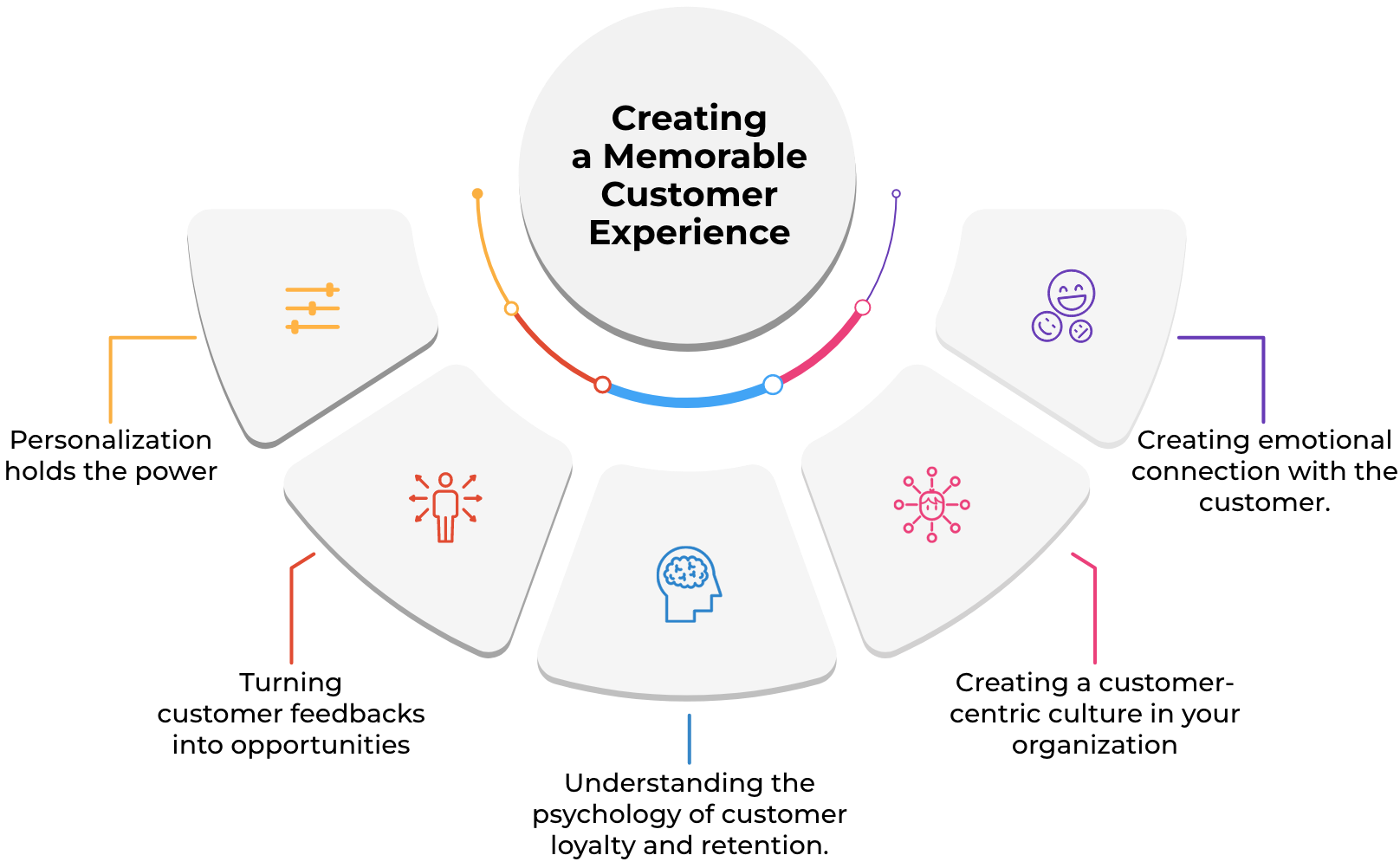Creating a customer experience (CX) strategy is essential for any business looking to succeed in the digital age. The strategy should define how customers interact with the brand, from their first touchpoint to the last. It should also consider how those interactions are personalized and tailored to each customer's needs. To do this, businesses must understand the customer journey and determine what touchpoints can be used to optimize it.
Companies that use tools like customer journey maps reduce their cost of service by 20%.
Forbes states that “companies that use tools like customer journey maps reduce their cost of service by 15-20%”. Additionally, businesses must consider how cookies and other data points can be used to track customer behavior and preferences in order to provide a more personalized experience. By creating an effective CX strategy, businesses can provide their customers with an optimal digital experience.
What is customer experience?
The customer experience (CX) is a customer’s overall experience when interacting with a company, from the initial point of contact to post-purchase. It is the sum of all touchpoints and interactions between a customer and a business.
By understanding customer journeys and creating personalized experiences, businesses can increase customer loyalty, satisfaction, and engagement.
Companies can focus on building a digital service strategy that is tailored to each customer's needs to provide them with an excellent CX.
Personalization used to create an individualized experience for each customer (by leveraging data such as demographics, purchase history, browsing history, etc) helps in delivering services that actually meet their needs.
Marketing technology like Digital Experience Platforms (DXP) can be used to create personalized experiences at scale by combining data from different channels into one platform, which would finally help you to present more personalized content to your customer.
How can Enterprises strengthen their customer experience strategy
An effective enterprise customer experience strategy should include personalization, a customer journey, and digital customer service to create a positive customer experience and increase loyalty.
A well-crafted customer journey will also help strengthen your customer experience strategy by providing customers with an easy and intuitive way to interact with your business. This includes ensuring that all touchpoints are optimized for mobile devices, providing fast response times on queries, and offering easy access to digital tools such as chatbots or virtual assistants.

Why do you need to create CX?
This ACA Study confirms the significance of creating customer experience. Here’s what the report found “74% of customers are willing to go through the trouble of switching companies if they find out they’ll get a better customer experience.”
74% of customers are willing to switch service providers if they get a better customer experience
This contributes to being one of the reasons why you need to create a customer experience. Some of the other reasons are;
- Increases sales - Customers that have a positive customer experience are more likely to interact with brands, which fosters the development of relationships that benefit all stakeholders. Social media and emails are being used by the company to interact with customers and gather more input. Customers are more inclined to express their requirements with businesses thanks to these real-time connections. These practices will help you bring your customer down the marketing and sales funnel and ultimately increase sales.
- Builds strong customer relationships- An established, happy customer is more likely to make a purchase than a fresh prospect as to acquire a customer is more expensive to retain a customer. Designing a customer experience that may generate a lifecycle of feedback and product offerings is thus a good idea. Conversion rates will rise as a result. Revenue growth shouldn't be the primary goal, though. Instead, businesses should put connections first.
To new prospects, the same idea can be applied. Companies should continue to offer value through marketing and interactions rather than considering prospects as binary sales points. It will establish a connection that will aid in turning prospects into devoted clients.
- Increases customer loyalty - A foundation of loyalty is created and client retention is enhanced by exceptional customer experience. People are searching for premium goods and services that are reasonably priced. Customers will pay more for the same goods and services if they believe the businesses are adding value through interactions. Long-term loyalty is given to businesses that offer extra value.
- Minimizes costs - Companies can better understand their customers by taking a CX-centric approach. Less speculation about what consumers want results in possible cost reductions in marketing.
In traditional marketing, businesses frequently call consumers repeatedly to promote new goods or services without knowing their specific needs. Companies can use built-in checkpoints in a CX-centric strategy to marketing to help them become more customer-focused. Businesses gather data, develop business analytics, and comprehend market dynamics. Costs are reduced while revenue and customer satisfaction are raised.
- Reduce churn rate - Customer experience (CX) is a critical factor in reducing customer churn rate. By providing a positive customer experience, businesses can ensure that their customers remain loyal and engaged with their brand. CX helps businesses build trust and loyalty among their customers, which in turn leads to higher retention rates. Companies can also use CX to identify potential problems that may lead to customer churn before they become bigger issues. By understanding what their customers need and want, companies can provide better experiences that keep them coming back for more.
- Acquire a competitive edge - With CX, you can be better than your competition because you can provide better than them. Customer experience is one of the most important factors that can help you acquire a competitive edge in today's market. By providing a great customer experience, you can ensure that your customers are satisfied with your products and services and will continue to remain loyal to your brand. Customer experience also helps you stay ahead of the competition by providing customers with personalized experiences, understanding their needs and preferences, and responding quickly to their inquiries. With customer experience, you can improve customer retention rates, increase sales conversions, and create positive word-of-mouth for your brand.
Best practices to strengthen your CX strategy
Forbes states that “Companies that use tools like customer journey maps reduce their cost of service by 15-20%.”. This becomes one important aspect of why you should focus on building a CX strategy. Some of the practices you can use to follow a CX strategy are:

- Journey mapping - The core of any business is its customers. You must therefore comprehend their requirements, desires, and preferences. You can categorize clients based on their characteristics by developing buyer personas or customer profiles. Personas enable your customer-facing employees to better understand your client’s needs. In order to respond to various important questions like, what drives the clients and what do they hope to achieve?
Contrarily, customer journey mapping enables you to comprehend client interactions across all touchpoints, channels, and interactions. You can understand the customer's perspective and see past any pain points in their experience by viewing the journey.
- Omnichannel interaction experience - Proving the freedom of interacting on different channels makes your customer gain loyalty and interest in your brand. Customers can easily interact with you using this component using their preferred method of communication. To provide a consistent experience while transitioning between channels, your agents can leverage contextual information.
- Personalized Communication - Communication is the key to the success of any business per se. The appropriate technologies might help you improve communication as part of your CX strategy. Live chat tools, software for gathering client feedback, and even survey-based solutions can offer insightful data, track customer interactions, and customize the user experience.
- Build a customer cross-functional team culture - Business silos might make the consistency more difficult. All departments, even those that don't contact customers, must be on the same page in order to provide an effective customer experience. For instance, even if the finance staff doesn't deal directly with customers, a buyer's inability to handle fees or bills could cost you a client. Encourage a culture within the organization that prioritizes the customer experience and empowers the employees to make decisions that benefit the customers.
Additionally, you must provide your personnel with the necessary training and keep them informed of any product updates so they are current. By encouraging inter-departmental communication, you can be sure that your agents are providing clients with accurate information.
- Active Feedback- Customer feedbacks help a business identify its flaws and grow towards the steps of success. You must determine your company's strengths and weaknesses in order to develop an efficient, customer-first CX strategy. Finding out where you need to improve is made easier with the aid of real-time feedback gathering across numerous touchpoints. It's also essential to get feedback from teams who interact with customers in order to understand their difficulties. By removing these obstacles, issues can be resolved more quickly.
- Being responsive and understanding your customer needs - Understand what your customers are trying to achieve and tailor your solutions to meet those needs. You also have to make sure that you respond to your customers in a timely manner and keep them involved in the status of their requests.
- Providing post-sales support - Be with your customer even after the sales are done. Provide ongoing support and assistance to customers after they have made a purchase to ensure satisfaction and loyalty.
- Leverage Technology - Use technology to improve the customer experience, such as through automation, self-service options, and personalized communication. You may also use various tools like DXP, CDP, and Hotjar to track and analyze customer behavior and provide a seamless experience to your customers.
Some tools you can use to create a customer experience
Implementing a successful customer experience strategy means understanding customer behavior and expectations, and meeting those expectations. With a successful CX strategy, you open a new window of marketing to go above and beyond expectations! These stats can be an epiphany for you,
Forbes states; “84% of companies that work to improve their customer experience report an increase in their revenue.” This can be achieved by creating CX, and it can be made easier with the help of multiple tools like;
- DXP: Digital experience platform (DXP) is a software solution that helps companies create and manage digital customer experiences. It provides an integrated suite of tools that enable organizations to develop, deploy, and manage digital experiences across multiple channels such as websites, mobile apps, and social media. DXP also enables companies to track customer interactions with the content they create in order to better understand their customers’ needs and preferences. By leveraging the data gathered from these interactions, companies can improve their customer experience by providing more personalized content and services. In addition, DXP can help businesses reduce costs by streamlining processes related to customer experience management.
Examples - Fragmatic, AEM, Segment, etc.
- CDP: Customer Data Platform (CDP) is a technology used to store and manage customer data. It helps businesses create a unified view of their customers, enabling them to better understand their needs and preferences. With CDP, businesses can analyze customer data to gain insights that can be used to improve the customer experience. It also helps in creating personalized experiences for customers by providing them with tailored content, offers, and services based on their individual interests. CDP is an important tool for creating an engaging customer journey that leads to increased loyalty and satisfaction.
Examples - Segment, Oracle, etc.
- CRM: Customer Relationship Management (CRM) is a technology-enabled system that helps businesses manage their customer relationships more effectively. It enables companies to collect, store, and analyze customer data to better understand their customers’ needs and preferences. CRM also helps companies to create a better customer experience by providing personalized services and tailored offers. By using CRM, businesses can improve their relationship with customers, increase customer loyalty, and maximize profits.
Examples - Zoho CRM Plus, BigContacts.
- Heatmapping Tools - Heat mapping is a website analysis tool that helps businesses understand how their users interact with their websites. It captures user behavior data such as mouse movements, clicks, and scrolling on the website. This data can then be used to identify areas of improvement in the customer experience. Heat mapping helps businesses improve their website design and layout, by showing them which elements on the page are attracting more attention from visitors and which ones need more focus. Heat mapping also helps businesses identify areas of their website where users need help or clarification, so they can provide better guidance and navigation to customers. By understanding customer behavior on the website, businesses can create an optimized user experience that leads to better conversions and improved customer satisfaction.
Examples - Hotjar.
- Chatbots - Through a live chat interface, a chatbot simulates human dialogue using artificial intelligence. Based on the prior communication from the consumer, pre-written responses that are programmed into it are presented. Chatbots search the user's text for words and phrases associated with typical consumer stumbling blocks. Opting for these will give a sense of personal communication to your customers and will also solve customer queries at a very fast pace.
Example - ProProfs Live Chat, Verint, etc
Conclusion
Customer experience plays a vital role in the success of any digital marketing strategy. By leveraging customer experience, marketers can create more effective campaigns that are tailored to their target audience.
With the help of customer experience, marketers can gain insights into what their customers want and need, giving them a better understanding of their target market. This helps them to create campaigns that are more likely to be successful and drive higher ROI.
Additionally, customer experience helps marketers get better results from their martech investments by helping them understand which technologies are most effective for their business and how they should be used to optimize customer journeys. Ultimately, leveraging customer experience can help marketers ace the martech game and get maximum returns from their investments.
With emerging technological trends you need a partner that makes sure your website is innovative and delivers the best of personalization. At OpenSenseLabs, we help enterprises provide a better customer experience. Contact us at [email protected] and let our experts help you out.
Subscribe
Related Blogs
Trek n Tech Annual Retreat 2025: A 7-Day Workcation of OSL

OSL family came together for the Trek n Tech Annual Retreat 2025, a 7-day workcation set amidst the serene beauty of…
Exploring Drupal's Single Directory Components: A Game-Changer for Developers

Web development thrives on efficiency and organisation, and Drupal, our favourite CMS, is here to amp that up with its…
7 Quick Steps to Create API Documentation Using Postman

If you work with API , you are likely already familiar with Postman, the beloved REST Client trusted by countless…




